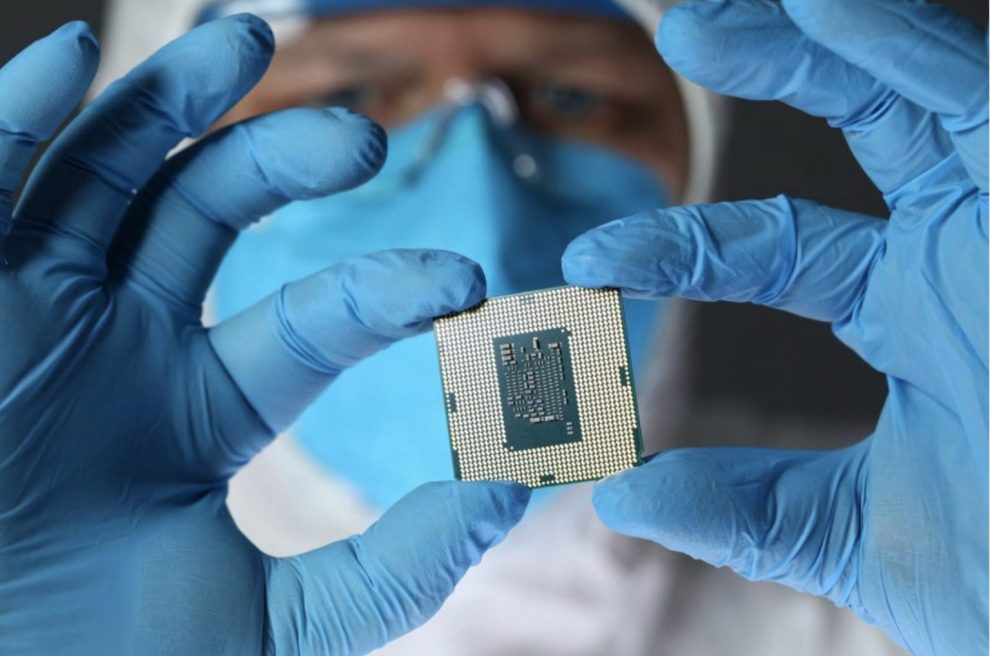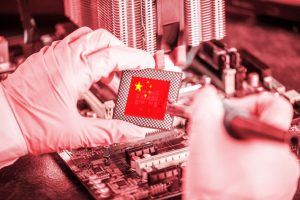A year-long global chip glut, that wiped off $12 billion from the world’s two largest memory chipmakers – Samsung and SK Hynix – is nearing an end, but stagnant demand and China’s flailing economic recovery are forcing chipmakers to temper their celebrations.
All major markets for chips, including smartphones, PCs and data centres, have shrunk this year, as consumers scale back spending amid a weak global economy, high inflation and rising interest rates.
And while demand for chips to support generative artificial intelligence (AI) has rapidly increased since OpenAI’s ChatGPT was launched late last year, the sector still accounts for a small fraction of overall chip demand.
Also on AF: Samsung to Follow Through With Production Cuts Despite Chip Recovery
The result has been an unprecedented oversupply of commodity chips, which has lingered since last year and added to the woes of an industry that was battling a Covid-induced chip shortage until the first half of 2022.
“Demand is recovering very gradually,” Woohyun Kim, chief financial officer at SK Hynix, said on an earnings call this week. The South Korean chipmaker has seen operating losses worth $5 billion in the first-half of the year.
The easing glut is largely the result of production cuts by chipmakers and a slowing decline in PC shipments.
Data from tech analysts Canalys showed the fall in PC shipments eased to 11% in the June quarter, compared to a 30% slump in each of the previous two quarters.
The smartphone market is also improving, with cellphone shipments falling 8% in the June quarter, versus 14% in the first quarter, according to research firm Counterpoint.
But SK Hynix’s Kim said improving PC shipments will have “limited impact on chip demand” as the recovery was “mainly led by promotions and low-end models”.
Shipment forecasts for PCs and smartphones this year have been downgraded from earlier predictions, he added.
China’s recovery weighs
A sluggish recovery in China, the world’s biggest chip buyer, is also dampening the overall outlook.
Both Samsung and SK Hynix said China’s reopening failed to live up to expectations that it would revive the smartphone market, and that they were extending production cuts of NAND memory chips, widely used in smartphones to store digital data.
Analog chipmaker Texas Instruments, which has heavy exposure to China, forecast third-quarter revenue and profit below Wall Street targets on Tuesday, bogged down by a sluggish recovery in end-market demand that has forced clients to cancel orders.
“China was roughly half of sales at the end of fiscal 2022, so China has the largest impact on TI’s business,” said Logan Purk, analyst at investment firm Edward Jones.
AI winners and losers
Despite the chip glut, manufacturers of chipmaking equipment like KLA and Lam Research have emerged as early winners of an AI boom. Both companies forecast quarterly revenue above Wall Street estimates this week, sending their shares higher.
“Advanced AI servers have significantly higher leading-edge logic, memory and storage content versus traditional servers, and every incremental 1% penetration of AI servers and data centres is expected to drive $1 billion to $1.5 billion of additional [chip equipment] investment,” Lam CEO Tim Archer said on a conference call with analysts.
Chipmakers are also increasing production of the high-end chips used to support AI related chips.
SK Hynix said demand for AI server memory had more than doubled in the second quarter compared to the first quarter. Its DRAM chips, which hold information from applications while the system is in use, sold for a higher price in the second quarter versus the first, on average.
The company leads the market in high bandwidth memory (HBM) DRAM used in generative AI. It had a 50% market share in HBM as of 2022, followed by Samsung’s 40% and Micron’s 10%, according to TrendForce.
But the demand for advanced chips is crimping corporate spending on servers, as some companies prioritise investment in AI. An inventory glut in server central processing units (CPUs) will persist until the second half of the year, Intel CEO Pat Gelsinger said on Thursday.
- Reuters, with additional editing by Vishakha Saxena
Also read:
Chip Arm Losses Tank Samsung’s Second-Quarter Profits by 96%
TSMC Plans $2.9bn Advanced Chips Fab to Keep Up With AI Boom
Chip Giant TSMC Flags 10% Sales Dip on Weak Global Demand
OpenAI Chief Urges South Korea to Supply Chips for AI Boom
























